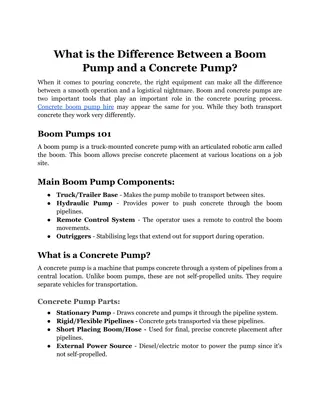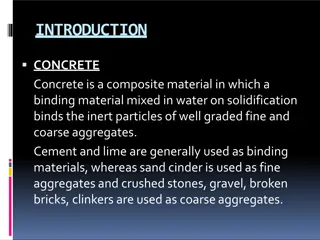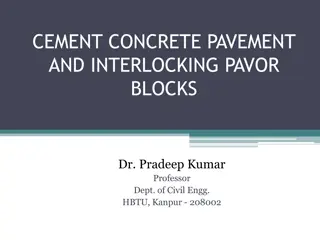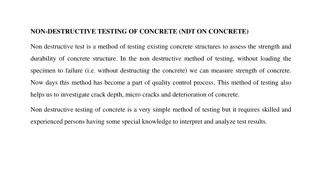
Exploring Physical and Chemical Properties of Concrete Composites
Dive into the world of concrete composites through various observation and testing stations. From analyzing color, shape, luster, texture, to conducting drop tests, solubility tests, and hardness tests, this lab explores the unique characteristics and behaviors of concrete samples. Engage in hands-on activities to understand the properties of concrete in depth.
Download Presentation

Please find below an Image/Link to download the presentation.
The content on the website is provided AS IS for your information and personal use only. It may not be sold, licensed, or shared on other websites without obtaining consent from the author. If you encounter any issues during the download, it is possible that the publisher has removed the file from their server.
You are allowed to download the files provided on this website for personal or commercial use, subject to the condition that they are used lawfully. All files are the property of their respective owners.
The content on the website is provided AS IS for your information and personal use only. It may not be sold, licensed, or shared on other websites without obtaining consent from the author.
E N D
Presentation Transcript
Physical Property Observations Stations Use the guiding questions below to help you write the descriptions for the Physical Property Observations. 1. COLOR: What colors do you see in your concrete samples? Is it the same color throughout? Describe all the colors in detail. 2. SHAPE: What is the general shape of your sample? Is it the same shape throughout? Make sure to note any imperfections and deviations from the general shape. 3. LUSTER: Is your sample shiny, dull, or somewhere in between? Does it have the same sheen throughout? 4. TEXTURE: How does your sample feel? Does it have the same texture on all sides? 5. PHASE: What state of matter is your sample?
Physical Property Measurement Stations Use the charts below and the density formula in our notes to guide your calculations for the average mass, volume, and density of your concrete samples. Do not write on this chart write your calculations on your own paper! Mass Volume Density Sample 1 Sample 2 Averages:
Drop Test Station Follow the directions below to test your samples wettability & reactivity. 1. Set up your phone so that you are able to see your samples clearly. Test your samples one at a time. 2. Record a video on your phone showing yourself use the droppers set up at the station to add a single drop of water, soap, and alcohol on your sample. Make sure that the drops do not mix with each other. 3. Record what happens for three minutes and observe if any changes occur. 4. Replay the video you just took at a faster speed and record your observations on the Chemical Property Table. For wettability, count how many seconds it took for the water to absorb into your samples and describe if you sample is waterproof or not.
Solubility Station Follow the directions below to test your samples. 1. Break off a small piece of your concrete (this can be done after the strength test). Add your sample to an empty cup and add water. 2. Stir the water with your sample and see if your sample dissolves in the water.
Hardness Test Station Follow the directions below to test your samples. 1. On the table there is a box of different materials. You will be determining where your sample belongs on the hardness scale by comparing it to these materials. 2. Scratch your concrete with each material. a. If a visible scratch forms on your concrete, then your concrete is softer than that material. b. If the material is not able to form a visible scratch on your concrete, then your concrete is harder than that material. 3. On your observation sheet, record which of the materials were able to scratch your concrete and which were not.
Strength Test Station Follow the directions below to test your samples. 1. Place your concrete block between the two chairs. 2. Tie a string to the middle of your block where I have scored the concrete. 3. Add weights to the bottom end of the string so that the weight is hanging. 4. Add weights in increments of 5 lbs until your concrete block breaks. 5. Record the lbs that your concrete block broke at on your data table. a. If your concrete block is already broken, then your lbs = 0
Acid vs. Base Drop Test Station Follow the directions below to test your samples. 1. Test your samples one at a time and test the acid and base one at a time so that they do not mix with each other. a. Hydrochloric acid and bleach are both dangerous chemicals! Be careful not to get it on yourself; if you do immediately wash the affected area with soap and water. b. You must wear goggles and gloves at this station. Stay standing the entire time. 2. Use the dropper set up at the station to add a single drop of acid onto your sample. 3. Observe what happens for one minutes and record your observations on the data table. 4. Wash off your sample with water and repeat with the bleach.






















